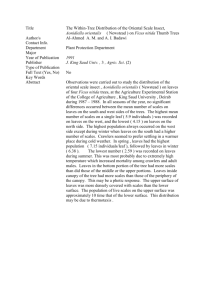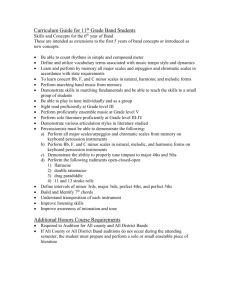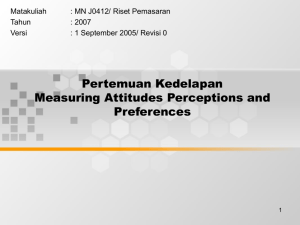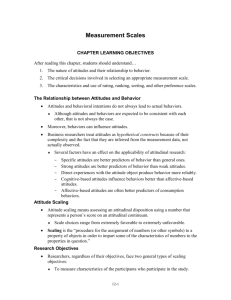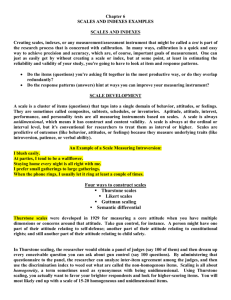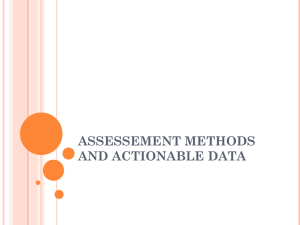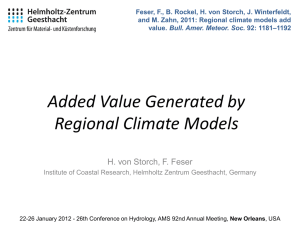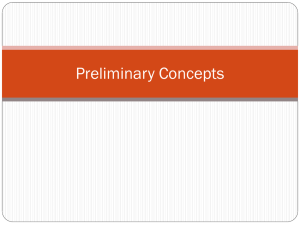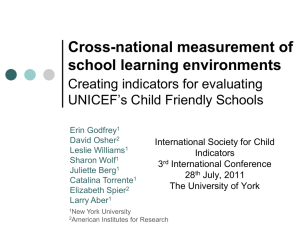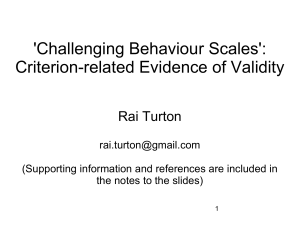Evaluating Safety Culture and Climate: Key Measurement
advertisement
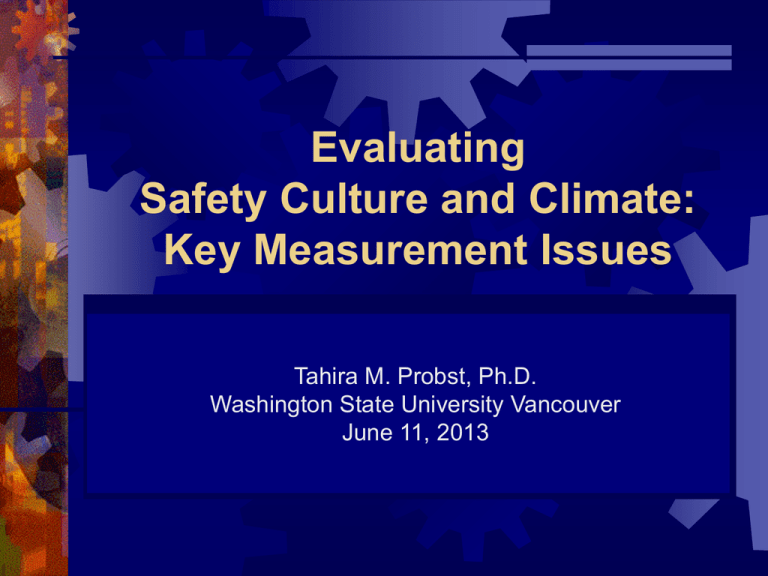
Evaluating Safety Culture and Climate: Key Measurement Issues Tahira M. Probst, Ph.D. Washington State University Vancouver June 11, 2013 Key Measurement Issues What are we measuring? Culture or Climate Substantive vs. Semantic Differences Shared Perceptions vs. Individual Attitudes Appropriate Level of Aggregation Global vs. Multi-dimensional Scale Scientist-Practitioner Differences Priorities, Goals, Intended Use of Resulting Data Home-grown vs. Validated Measures General vs. Specific to Construction Industry Response scales Even (prevent fence-sitting) vs. odd # of options Single-item vs. Multi-item Scales Organizational Culture: Historical Origins Two events in 1986 brought organizational culture to the forefront The Chernobyl nuclear disaster The Challenger space shuttle explosion Both accident investigations identified “poor culture” as contributing factor Since then, practitioners have tended to refer to “safety culture” Organizational researchers, however, tend to focus on “safety climate” Organizational Culture Assumptions, values, and philosophies that permeate multiple facets of an organization (Schneider & Gunnarson, 1996) Where Does Climate Fit In? Climate reflects the surface features of the safety culture (Flin et al., 2000) Observable attitudes and behaviors of organizational members (Moran & Volwein, 1992) Practices, procedures, and rewarded behavior (Schneider & Gunnarson, 1996) Climate is what we can measure. So, is it just a semantic difference? Depends on who you talk to! Shared vs. Individual Perceptions Climate Strength Climate is the shared perceptions regarding what is rewarded, expected, valued, and reinforced in the workplace Not everyone will necessarily have the same perceptions. The extent to which those views are shared reflects the strength (or intensity) of the climate. Strong Negative Strong Positive Weak Negative Weak Positive Climate Level Appropriate Level of Aggregation Organization Organizational Climate Departmental Climate Supervisor Workgroup Climate Employee Psychological Climate Or Job Site Global vs. Multi-Dimensional Measures of Safety Climate Zohar (1980) Brown & Holmes (1986) • Importance of safety training programs • Management attitudes toward safety • Effects of safe conduct on promotions • Effects of safe conduct on social status • Level of risk in the workplace • Effects of required work pace on safety • Status of safety officer • Status of safety committee • Management attitudes • Concern for employee wellbeing • Management action • Responsive to employee safety concerns • Level of physical risk Neal, Griffin & Hart (2000) • • • • Management values Safety communication Safety training Safety systems Benchmarking vs. Actionable Information “Company X falls at the 66th percentile.” Global number good for benchmarking, but doesn’t really provide actionable information regarding how to improve. By considering each of the dimensions separately, we could tell Company X that they were doing well on safety communication, but poorly with respect to safety systems. Scientist-Practitioner Differences Researchers and practitioners may have different priorities, goals, and/or intended use of the resulting data To improve safety or address a particular safety concern within a specific organization vs. To contribute generalizable knowledge that will increase our scientific understanding of safety and potentially benefit all organizations. These differences can potentially affect our measurement of safety climate. Home-grown/Specific vs. Validated/General Measures Need to consider the pros and cons of different types of safety climate measures. • Tend to be well-validated • Provides generalizable information across industries General Measure of Safety Climate • Perhaps too general to provide actionable information within a specific organization Industry-Specific Measure of Climate • Tend to be idiosyncratic • Unknown reliability or validity OrganizationSpecific Measure of Climate • If well-validated, can provide more specific actionable information, but few organizations have resources to develop such scales Other Issues Response scales “Employees are able to discuss their concerns about safety issues with management” Strongly Disagree to Strongly Agree Even: 1-4 or 1-6 (prevents fence-sitting) Odd: 1-5 or 1-7 (allows for greater variability and neutral midpoint) Single-item vs. Multi-item Scales Single-items are generally of unknown reliability and validity For example, does the above question capture everything an organization should know about “safety communication”? What about downward communication? Lengthy multi-item scales can be extremely time-consuming to administer

